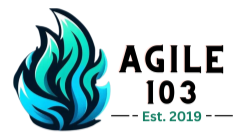Facilitated by TJ Badru.
In today’s data-driven landscape, organizations must swiftly transform raw data into actionable insights. Agile methodologies combined with powerful visualization tools like Power BI and Tableau enable teams to iterate quickly, adapt to changing requirements, and deliver value consistently.
Join us in June 2025 for our event, “Agile Data Analysis & Visualization with Power BI and Tableau,” where we’ll explore best practices, tool comparisons, and strategies to enhance your data analytics capabilities.
Embracing Agile in Data Analytics
Agile Business Intelligence (ABI) emphasizes iterative development, allowing for rapid delivery of BI functionalities. By adopting agile principles, teams can respond to evolving business needs, ensure continuous improvement, and foster collaboration between stakeholders and developers. This approach reduces development cycles and enhances responsiveness to change.
Power BI: Microsoft’s Data Visualization Powerhouse
Power BI offers a suite of tools that transform data from various sources into interactive dashboards and reports. Its integration with Microsoft products like Excel and Azure makes it a preferred choice for organizations within the Microsoft ecosystem. Key features include:
-
Data Modeling: Create relationships between datasets, define calculations, and develop KPIs.
-
Visualization: Utilize a range of charts, graphs, and maps to represent data effectively.
-
Collaboration: Share reports and dashboards across teams for cohesive decision-making.
For a comprehensive guide on Power BI’s capabilities, refer to Microsoft’s official documentation.
Tableau: Interactive and Intuitive Visualizations
Tableau stands out for its user-friendly interface and robust visualization capabilities. It allows users to connect to various data sources, create interactive dashboards, and uncover insights with ease. Notable features include:
-
Drag-and-Drop Interface: Simplifies the creation of complex visualizations.
-
Real-Time Data Analysis: Connects to live data sources for up-to-date insights.
-
Customization: Offers extensive options to tailor dashboards to specific needs.
Explore Tableau’s functionalities and how it can benefit your organization.
Comparing Power BI and Tableau
While both tools offer robust data visualization capabilities, choosing the right one depends on your organization’s specific needs:
-
Integration: Power BI integrates seamlessly with Microsoft products, whereas Tableau offers broader connectivity with various data sources.
-
Cost: Power BI generally presents a more cost-effective solution, especially for organizations already using Microsoft services.
-
User Experience: Tableau provides a more intuitive interface, which can be beneficial for users without a technical background.
For an in-depth comparison, consider reading Simplilearn’s guide on Power BI vs. Tableau.
Best Practices for Agile Data Visualization
To maximize the benefits of agile data analysis:
-
Iterative Development: Develop dashboards in stages, incorporating feedback at each step.
-
Stakeholder Collaboration: Engage end-users throughout the development process to ensure the final product meets their needs.
-
Continuous Improvement: Regularly update and refine dashboards based on user input and changing requirements.
Implementing these practices ensures that your data visualization efforts remain aligned with business objectives and user expectations.
Join Us
Don’t miss our June 2025 event, “Agile Data Analysis & Visualization with Power BI and Tableau.” Gain insights from industry experts, participate in hands-on workshops, and network with professionals aiming to enhance their data analytics strategies.
